June 17, 2025 | 17:18 GMT +7
June 17, 2025 | 17:18 GMT +7
Hotline: 0913.378.918
June 17, 2025 | 17:18 GMT +7
Hotline: 0913.378.918
The Vietnam Agriculture News reporter interviewed Mr. Nguyen Van Trong - Vice Chairman of the Vietnam Farm and Agricultural Enterprises Association (VFAEA) about this issue.

Mr. Nguyen Van Trong - Vice Chairman of the Vietnam Association of Farms and Agricultural Enterprises (VFAEA) discussed the potential and development opportunities of the swiftlet's nest industry in the future. Photo: Minh Phuc.
Sir, MARD has just approved the Protocol for the official export of swiftlet's nest products from Vietnam to the Chinese market. What does this mean for swiftlet's nest farmers as well as the business community producing, processing, and exporting bird's nests in Vietnam?
The swiftlet's nest industry is very happy when the General Department of Customs of China and MARD signed the Protocol on the export of swiftlet's nest products from Vietnam to the Chinese market after 3 years of negotiation and finalization of documents and procedures.
But besides the joy, this is the worry for the swiftlet industry. The swiftlet industry was established in the 18th century (in the reign of King Tu Duc), but at that time the output was very little, mainly from exploiting the nests on the island. By 2004, swiftlet breeding began to develop. Especially, from 2010 onwards, the growth rate increased sharply, leading to many consequences.
In 2013, MARD promptly issued Circular 35 on temporary regulations on the management of swiftlet farming. At that time this bird was still considered a wild animal. After that, MARD found that bird's nest products have a very high value. Therefore, the content of swiftlet husbandry management has been included in the Law on Livestock (listed as other animals in livestock) and Decree 13, Decree 46, and circulars and guiding documents of the Law on Livestock.
The swiftlet farming industry has great potential. It is currently concentrated in Southeast Asian countries such as the Philippines, Indonesia, Malaysia, Thailand, Vietnam, and some others countries.
In particular, in our country, the swiftlet industry is also included in the livestock development strategy. In 2017, there were only more than 7,000 bird nest houses in the country (in 42 provinces and cities), concentrated in the South Central, Central Highlands, Southeast, and Southwest provinces.
However, up to now, the whole country has about 30,000 swiftlet houses, which means the growth rate is too fast, not to mention the island's nests. In some localities, the number of swiftlet houses has increased 5 times in the past 5 years.
"The total output of Vietnam's bird's nest is currently about 150 tons and is very valuable. According to the plan, by 2030, the production of swiftlet's nests will increase to 350-400 tons (equivalent to more than $1 billion). Although the output is not large, the quantity is not much, but the value is very high." Mr. Nguyen Van Trong said.
Gladly, recently, the Protocol on exporting swiftlet's nests from Vietnam to the Chinese market has been signed by MARD and the General Administration of Customs of China. This is an important basis for us to promote trade promotion, and brand development and enhance the value of Vietnamese swiftlet's nest products.
As you just shared, the fact that we signed the Protocol on exporting swiftlet's nest to the Chinese market is both a joy and a worry for the swiftlet's nest industry. So, what conditions must swiftlet's nest products in Vietnam meet to conquer this market?
To implement the contents specified in the Protocol, the swiftlet's nest industry still has a lot of work to do. Our current bird's nest product does not have an identification number, so the origin cannot be traced.
Before that, to prepare for this, the Vietnam Association of Farms and Agricultural Enterprises actively built management software according to the provisions of Circular 20. But so far, only 1,250 swiftlet nest houses have been identified according to the national identification code in Decision 124 of the Prime Minister. For the bird's nest to be exported to the Chinese market, all products must have an identifier for the owner of the swiftlet's nest and the swiftlet's nét so that the authorities can trace the origin of the goods.
In addition, all establishments raising, preliminarily processing, processing, and packing products from bird's nests must ensure all legal regulations on distance, and regulations on farming areas according to the Resolution of the People's Councils of the provinces with the profession of raising swiftlet. Articles stipulated in the Law on Livestock and Decree 13. Along with that, it is necessary to ensure disease safety and food safety to meet the requirements of the Chinese market.
This is the biggest challenge, despite the Protocol. The export will be difficult if the above issues are not well accomplished.
What are the potential and competitive advantages of Vietnamese swiftlet's nest products exported to China compared to other countries?
Vietnam's swiftlet's nest production is not equal to that of the Philippines, Indonesia, and Malaysia. However, the quality of Vietnam's swiftlet nest is very good, praised, and highly appreciated by Chinese enterprises, and has a competitive advantage. In particular, China is a huge market for swiftlet's nest consumption.
For example, Southeast Yen Do Company in Fujian province (China) has invested in a swiftlet's nest pre-processing factory with a capacity of 450 tons/year (which is 3 times the current output of Vietnam's swiftlet's nest). Therefore, their demand is very high. Even if our output reaches 350-400 tons, it is not enough to supply the Chinese market, let alone the Chinese community market around the world.
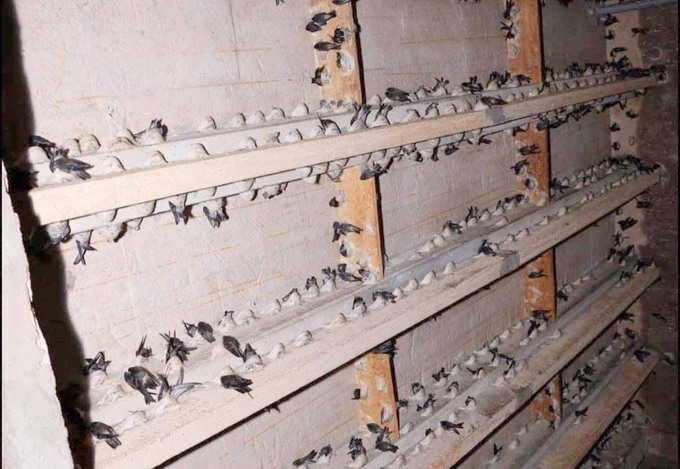
There should be in-depth research topics on hatching techniques, migration techniques, and techniques for artificially raising swiftlets. Photo: H.Binh.
Swiftlet nest farming is a special profession, very difficult to manage. With the current growth rate of the number of swiftlet houses, is it clear that we also need to take into account the consequences and risks to prevent them?
That's correct. For example, in Kien Giang province, there are about 3,000 bird nest houses nationwide. Out of a total of 30,000 bird nest houses, only 10% have high efficiency, about 20% are effective and the remaining 70% are not effective.
If we exploit many nests, plus climate change affects the fertility of swiftlets and the huge growth rate of swiftlets, it could lead to some serious consequences. Because the cost of building a bird nest is from VND1 billion to VND6 billion.
Due to climate change, swiftlets migrate from unfavorable to more favorable areas. In the Central Highlands, in recent years, the density of swiftlets has increased a lot due to favorable living conditions. Each locality needs to properly assess the current status and development conditions of swiftlet farming to make an appropriate development plan.
According to the provisions of the Law on Livestock: cities and towns that already have birdhouses are still allowed to exist, but they are not allowed to expand and produce sounds that affect the surrounding residential areas. As for the newly built swiftlet's nest house, it must be located in the farming area specified in the Resolution of the Provincial People's Council. Localities must strictly control this issue to avoid spontaneous and widespread bird nest development.
Minister Le Minh Hoan said that in the coming time, MARD will build a responsible and sustainable bird's nest industry in Vietnam. So in your opinion, what are the key solutions we need to focus on implementing to achieve the above goal?
I find the idea of the Minister of MARD Le Minh Hoan to be very timely and completely suitable for the current conditions. However, first of all, the livestock industry needs to assess the overall situation of the swiftlet's nest industry regarding both scale and output. This is for sustainable and effective development. Climatic sub-zones of farming areas, sub-climates of farming houses, and all related equipment.
Along with that, there should be specialized research topics on hatching techniques, flocking techniques, and techniques for artificially raising swiftlets... Currently, we do not have any research on nutrition for swiftlets. It is necessary to form product value chains from production, processing, product consumption, and national product development for products from swiftlet's nests in the future.
To do that, state management agencies and local authorities at all levels must well perform the role of managing farming areas and livestock establishments. They also need to guide bird breeders to implement the breeding process to ensure disease safety…
In addition, associations must also become a bridge to gather businesses and livestock households, form product value chains, and meet market requirements.
Thank you!
Translated by Hoang Duy
/2025/06/17/2013-1-nongnghiep-112009.jpg)
(VAN) This notable growth trend reflects the global taste for fresh, nutritious fruits and the expanding use of lychees across various sectors.
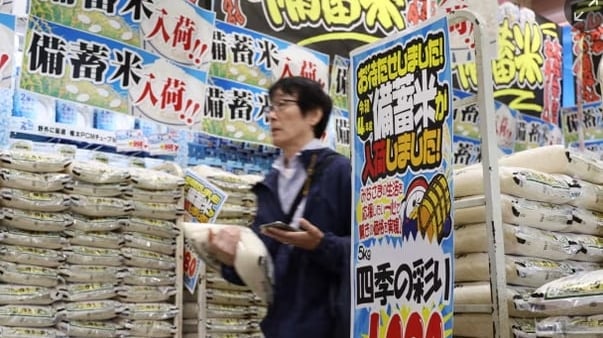
(VAN) The political and cultural insulation of Japan’s beloved grain is falling apart, and experts warn the country’s relationship with the staple will have to adapt.
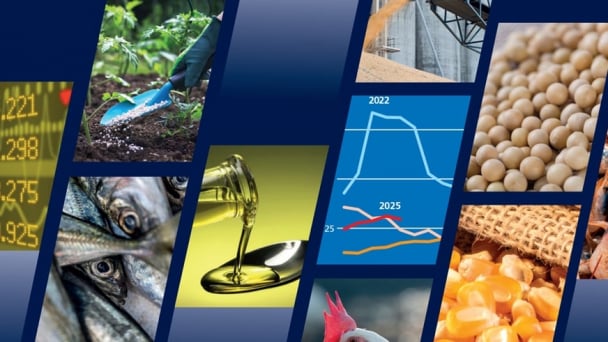
(VAN) Noting risks, report examines impacts of avian influenza, changing trade patterns since 2022, fish fraud, and shipping industry’s net-zero goals.
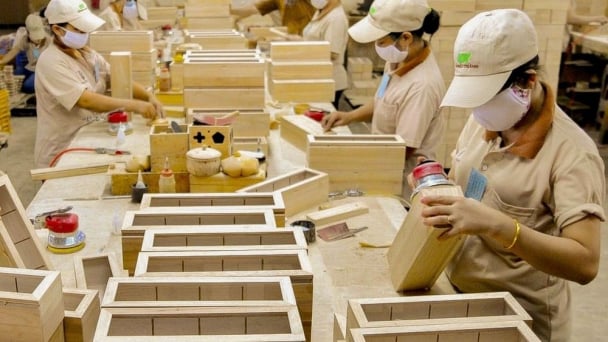
(VAN) Mr. Tran Quang Bao, General Director of the Forestry and Forest Protection Department, met and worked with the International Wood Products Association to promote cooperation in the field of timber trade.

(VAN) China's outbound shipments of rare earths in May jumped 23% on the month to their highest in a year, though Beijing's export curbs on some of the critical minerals halted some overseas sales.
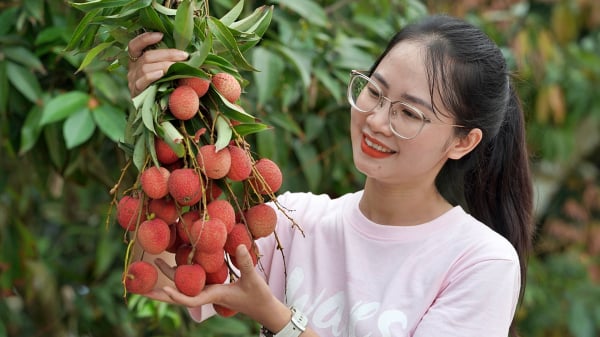
(VAN) To sustain capital flow, administrative reform alone is not enough; what farmers truly need is an ecosystem where both government and businesses grow together in support.
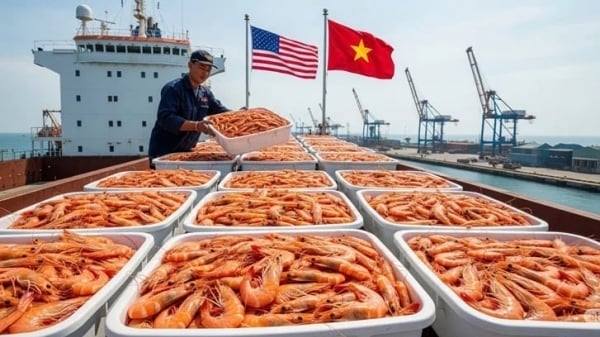
(VAN) Vietnam and the United States are proactively working together, each in their own way, to ensure that every container of agricultural goods carries not just products, but also long-term trust and value.